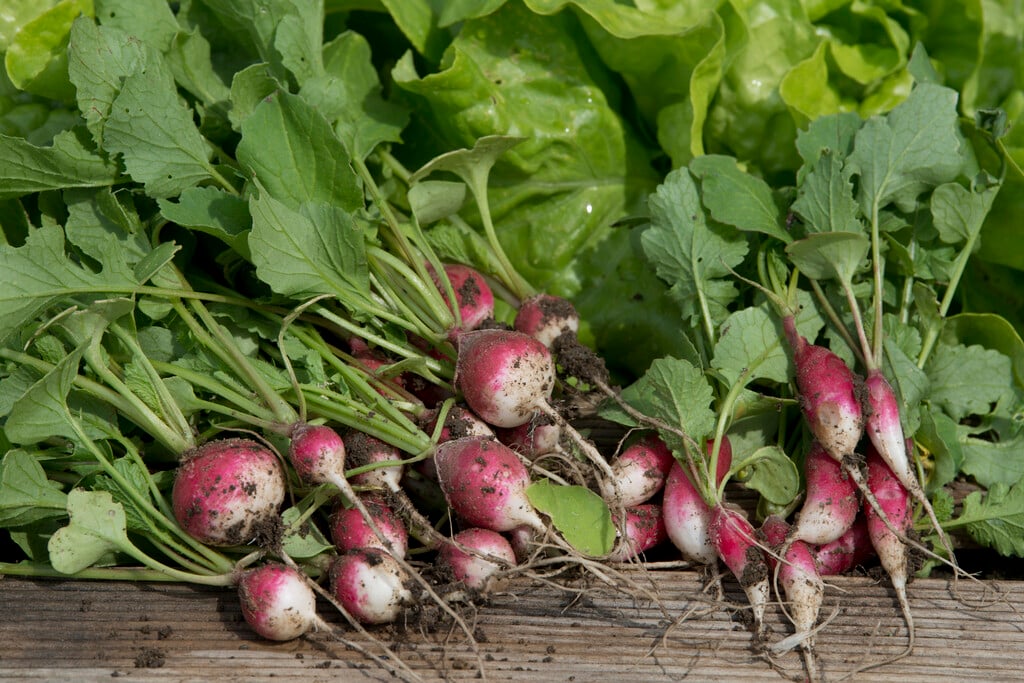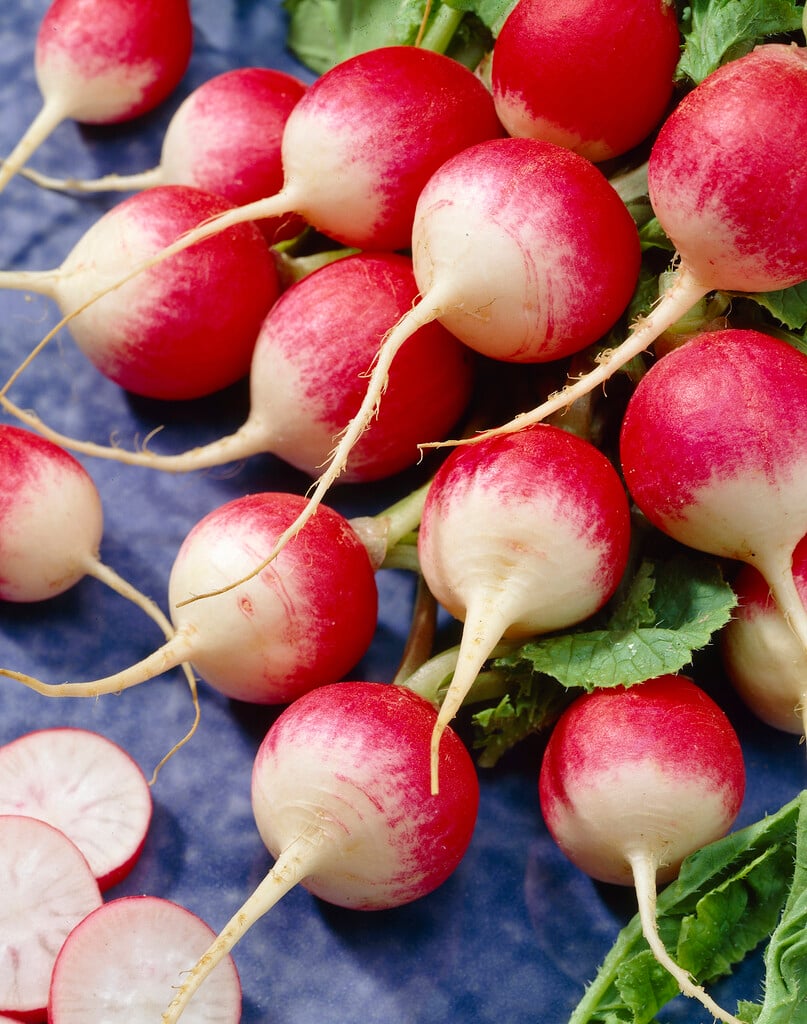Raphanus sativus
common radish
This is the wild variety from which all edible radishes have been bred. They come in many shapes, sizes and colours; from small globes to long, tapering torpedoes, in shades of red, pink, white, yellow and purple-skinned. If left to flower, the flowers are four-petalled pale yellow or cream on a stem of about 30-40cm
Size
Ultimate height
0.1–0.5 metresTime to ultimate height
1 yearUltimate spread
0.1–0.5 metresGrowing conditions
Moisture
Moist but well–drained, Well–drainedpH
Acid, Alkaline, NeutralColour & scent
| Stem | Flower | Foliage | Fruit | |
| Spring | Green | |||
|---|---|---|---|---|
| Summer | Cream Yellow | Green | ||
| Autumn | Green | |||
| Winter |
Position
- Full sun
Aspect
East–facing or North–facing or South–facing or West–facing
Exposure
Exposed or Sheltered Hardiness
H3Botanical details
- Family
- Brassicaceae
- Native to GB / Ireland
- No
- Foliage
- Deciduous
- Habit
- Columnar upright
- Genus
Raphanus can be annual, biennial or perennial herbaceous plants, often with lyrate, glaucous leaves, small, four-petalled flowers and indehiscent fruits. Edible species are cultivated as annual vegetables (radish)
- Name status
Correct
How to grow
Cultivation
Grow in any moisture-retentive soil as long as it isn't too acidic, in full sun. For more advice see radish cultivation
Propagation
Propagate by seed. See sowing vegetable seeds
Suggested planting locations and garden types
- Wildflower meadow
- Wildlife gardens
Pruning
No pruning required
Pests
May be susceptible to slugs and snails, and flea beetles
Diseases
May be susceptible to brassica downy mildew
Love gardening
Sign up to receive regular gardening tips, inspiration, offers and more
View our Privacy Policy
Get involved
The Royal Horticultural Society is the UK’s leading gardening charity. We aim to enrich everyone’s life through plants, and make the UK a greener and more beautiful place.

